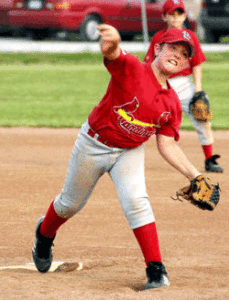Is Pitching Velocity Really that Important?
About this time last year, I attended and spoke at at big sports medicine conference organized by Massachusetts General Hospital and the Harvard Medical School. Given that it was baseball season, and the event’s organizers were all also on staff with the Boston Red Sox, a big focus of the event was the diagnosis, treatment, and causes of throwing injuries to the elbow and shoulder.
One of the organizers happened to be my good friend Mike Reinold, who is the head athletic trainer and rehabilitation coordinator for the Red Sox. As you probably know, we collaborated on the Optimal Shoulder Performance DVD set as well.
One of the resounding themes of Mike’s talks was that throwing hard is not the single-most important factor in being a successful pitcher. Rather, success is all about changing speeds and hitting spots. The point is an important one – and it’s backed up by the success of the likes of Jamie Moyer, Tom Glavine, and Greg Maddux.
Why is it so important for youth pitchers and parents to understand this? It’s because it demonstrates that long-term success is not about dominating in little league; it’s about acquiring skills that allow for future improvements.
Youth pitches should focus on commanding their fastballs with consistent repetition of their mechanics early-on – not just throwing hard. If you think you have the fastball mastered at age 9 and simply learn a curveball so that you can dominate little league hitters, you’re skipping steps and trying to ride too many horses with one saddle. It’s not that the curveball is inherently more stressful than any other pitch; it’s just that – as the saying goes – “if you chase two rabbits, both will escape.”

While kids need variety, they shouldn’t try to master too many different complex skills at once. Step 1 is to have command of your fastball – not just to throw it hard.
Step 2 is to learn a good change-up to start creating the separation to which Mike is referring. Breaking pitches can come later.
Need proof? I recently saw some statistics that demonstrated that the MLB average against off-speed pitches has decline each of the past three years. Meanwhile, not surprisingly, the average MLB fastball velocity has increased by about 1mph. Throwing harder made all those off-speed pitches more effective by creating more separation. So, yes, throwing the crap out of the ball is still important – but only if you know where it’s going – otherwise the average fastball velocity wouldn’t be higher in Low A ball than it is in the big leagues.
Oh, and in case you need further proof of how MLB general managers perceive the importance of off-speed pitches, Phillies First Baseman Ryan Howard gave you $125 worth when he signed a new five-year contract last month. While the MLB average against off-speed pitches has steadily declined over the past three seasons, Howard has gotten better.

The take-home message is that youth pitchers need to develop the mechanical efficiency and physical abilities that will eventually make them able to throw hard in conjunction with a solid assortment of off-speed pitches. They don’t need to light up radar guns and showcase curveballs when they’re still regulars at Chuck ‘E Cheese.
Related Posts
Developing Young Pitchers the Safe Way
Overbearing Dads and Kids Who Throw Cheddar
Sign-up Today for our FREE Baseball Newsletter and Receive a Copy of the Exact Stretches used by Cressey Performance Pitchers after they Throw!



